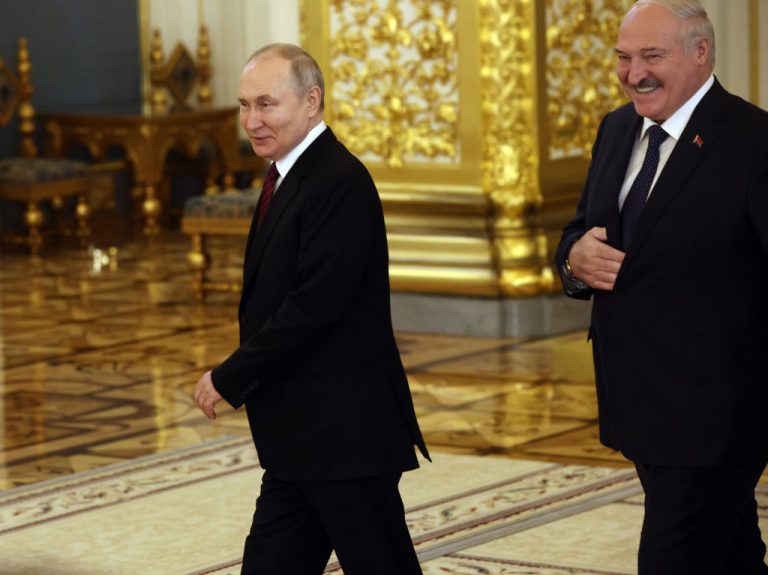TASS, the state media platform of the Russian Federation, has sharpened its rhetoric after news confirming that Belarus will host Russian nuclear warheads made headlines.
President of Belarus Alexander Lukashenko confirmed on June 13 that nuclear arms will be positioned in his country “in several days,” according to Reuters.
The statements are part of contents contained in a June 9 transcript of a call between Lukashenko and Putin published on the Kremlin website, where Putin told his Belarusian counterpart that following the competition of facility construction on June 7 and 8, “we will immediately start the process of deploying the corresponding types of weapons in your territory.”
MORE ON THE WEST-RUSSIA CONFRONTATION
- Biden Admin Purchases $290 Million Worth of Nuclear Radiation Emergency Drug
- Ukrainian Attacks Stall Against Russian Defenses Along Southern Frontline
Positioning of nuclear weapons on Belarusian soil is of significant tactical and strategic significance because Belarus is the only country on Russia’s western border that is not a member of NATO besides Ukraine.
Belarus also borders NATO members Latvia, Lithuania, Poland, and Ukraine’s northern border with close proximity to capital city Kiev, and is within striking distance of Estonia, another member of the Washington-led, Cold War-era alliance.
Success
You are now signed up for our newsletter
Success
Check your email to complete sign up
Lukashenko also worked with Putin to allow Russian forces to assemble in preparation of the invasion launched in early 2022 that began the present conflict in Ukraine.
The nuclear warheads stationed in Belarus are to remain under Russian command, but Lukashenko implied that he would also be able to control them if necessary.
In its own broadcast of the topic, Russian state media outlet TASS published several articles, of which the most widely circulated topic was a quote by Lukashenko to Belarusian national media outlet BelTA stating, “God forbid if I have to make a decision to use this weapon in modern times. But I won’t hesitate should there be an aggression against us.”
Several other articles published by TASS were similarly themed.
One article was titled “Russia Just Phone Call Away To Coordinate Nuclear Strike — Lukashenko” where the Belarusian President told Russian television network Rossiya-1, “Will I be looking around if a war breaks out? I make a call, and wherever he [Putin] is, he takes the call. He calls, I answer the phone, at any moment, even right now. So what’s the problem with coordinating a strike of some kind?”
Lukashenko continued, “We have always been a target [for the West]. They wanted to tear us to pieces since 2020 … no one has ever fought against a nuclear country, a country that possesses nuclear weapons.”
His comments may have been a likely reference to comments Lukashenko made earlier in June at a meeting of the Commonwealth of Independent States where he claimed that “violent regime change is being prepared” as “illegal members of armed groups are being trained” in Poland, Lithuania, and Ukraine for the purpose of breeding “sleeping extremist cells” inside of his country, RT reported.
Another article TASS published took further excerpts from the Rossiya-1 interview, quoting the Belarusian chief as stating that “as soon as we receive” the weaponry from Russia, “we will place them all over Belarus.”
“We have more than enough storage facilities. I am serious,” he added.
In a third article, TASS summarized another portion of Lukashenko’s comments as noting that “the tactical nuclear weapons that Russia is deploying in Belarus are three times as powerful as bombs used by the United States in Japan’s Hiroshima and Nagasaki.”













